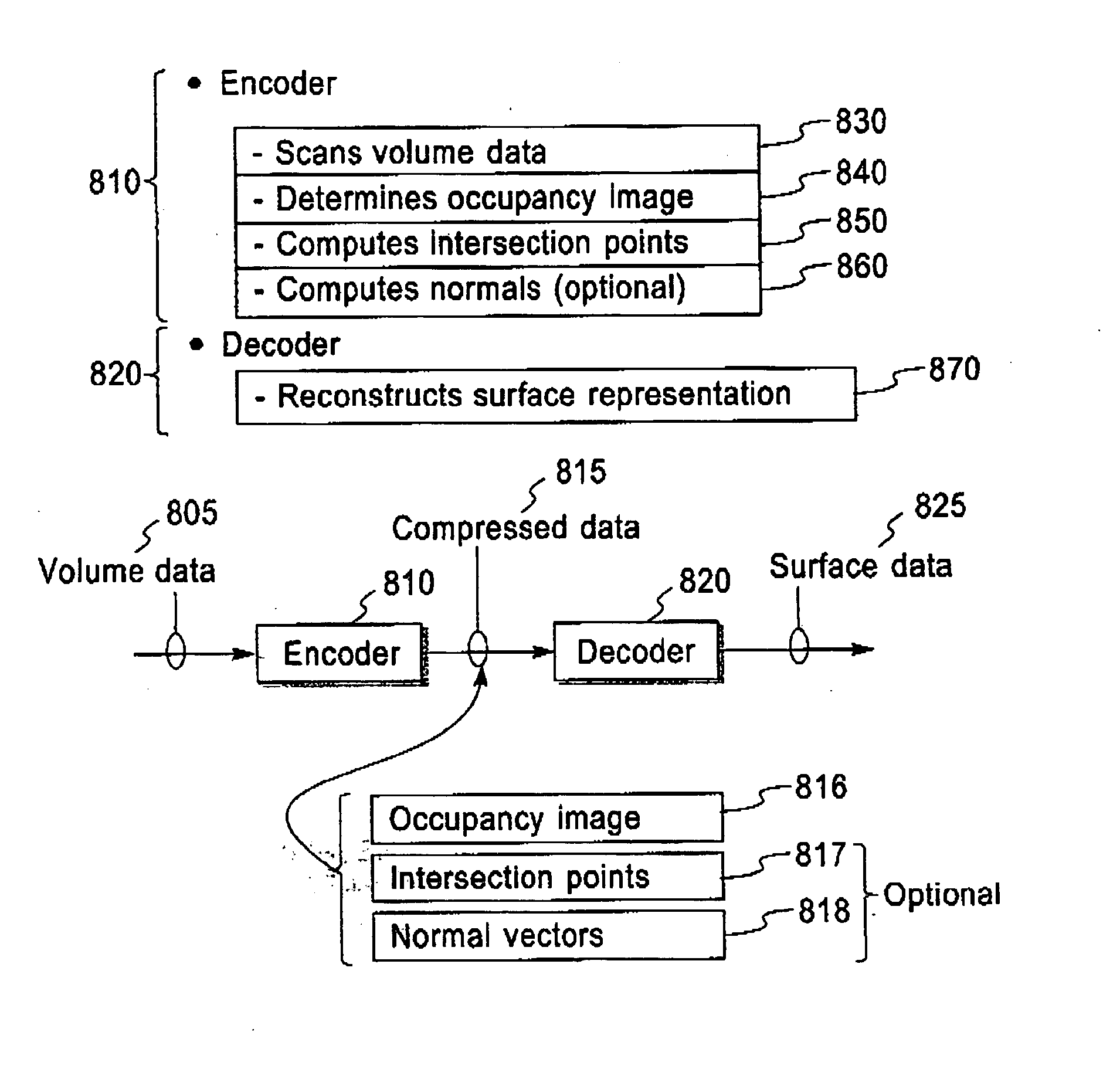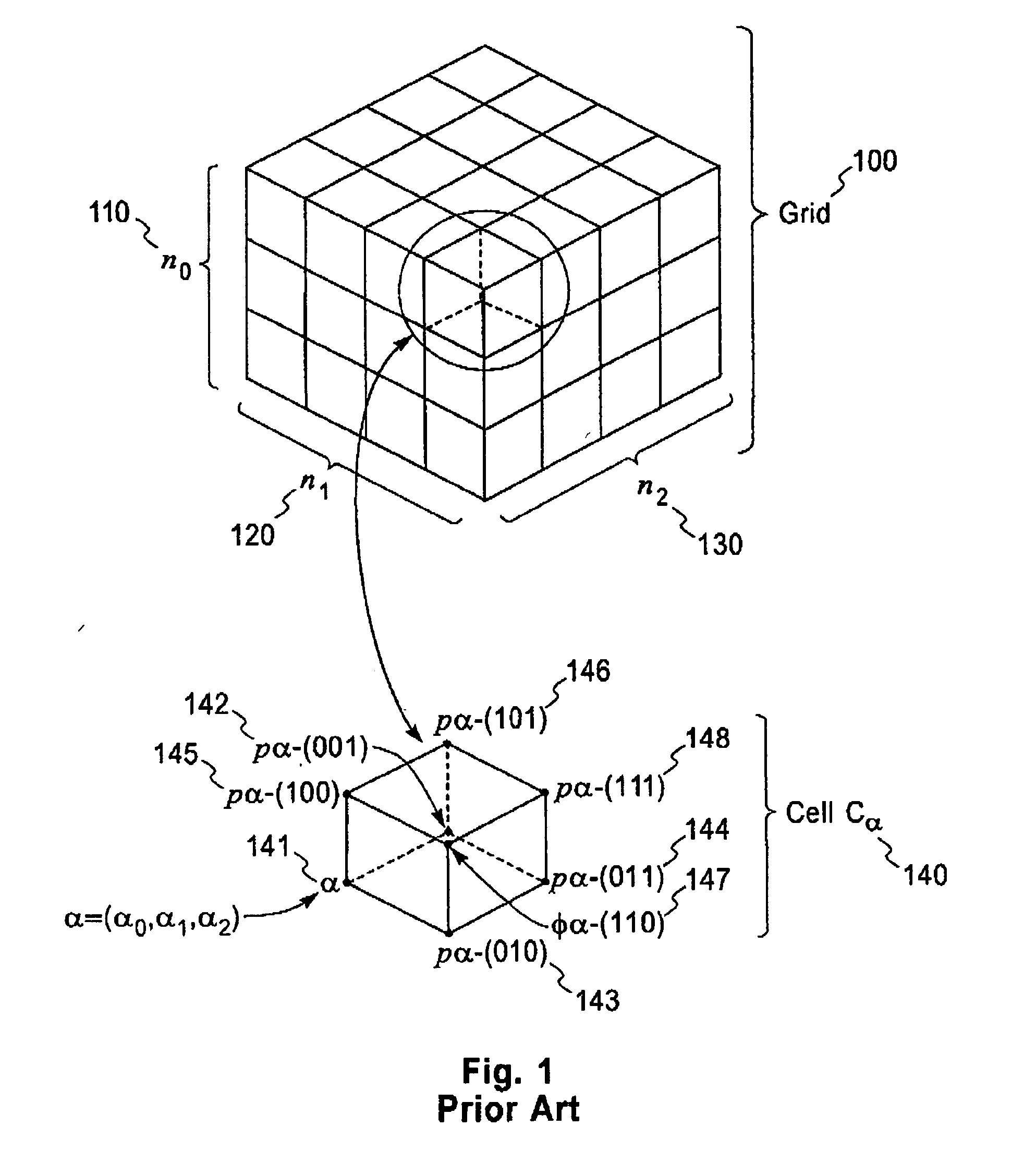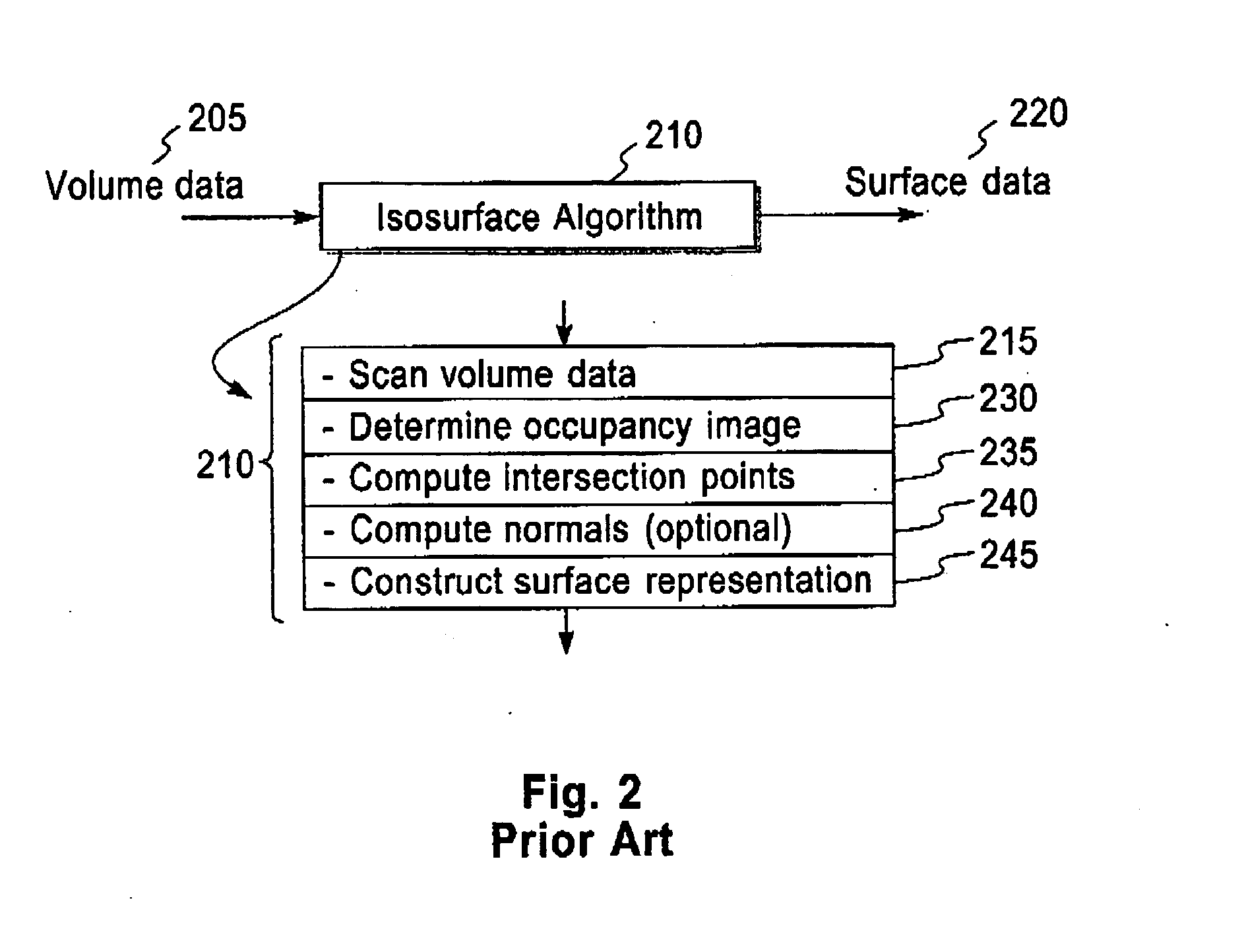Bi-level iso-surface compression
a compression and isosurface technology, applied in the field of computer graphics and scientific visualization, can solve the problems of large increase in the cost per vertex, major bottleneck in transmission time, and incompatible with the out-of-core nature of all these approaches, and achieve the effect of improving the quality of the reconstructed polygon mesh
- Summary
- Abstract
- Description
- Claims
- Application Information
AI Technical Summary
Benefits of technology
Problems solved by technology
Method used
Image
Examples
embodiment 1200
[0059]FIG. 12 is a flow chart showing the steps of an example of an advantageous embodiment 1200 of the isosurface decoder process 820 of FIG. 8. This advantageous embodiment can decode the compressed isosurface data 815 produced by the isosurface encoder process 810 with or without the optional records 817 and 818. While scanning the volume data in scan order, the method decodes the occupancy image, the intersection points, and the intersection point surface normals. This embodiment can produce either a polygon mesh or a set of oriented points as output surface representation. If producing a polygon mesh as output surface representation, from the information included in the occupancy image the method generates in step 1230 the topology and connectivity of the reconstructed polygon mesh. If producing a set of oriented points as output surface representation, step 1230 is not performed. From the location of the intersection points and the intersection point normals, the method recons...
embodiment 1400
[0061]FIG. 14 is a flow chart of an in-core more advantageous embodiment 1400 of the isosurface decoder process of FIG. 12, which produces a polygon mesh as a surface representation. This advantageous implementation takes as input a compressed isosurface data 815 with neither the optional intersection points record 817 nor the normal vectors record 818. In this embodiment step 1410 replaces step 1250 of the flow chart 1200. In step 1410 the normalized intersection point parameter is set to the default value one half. In step 1420 the normal vector corresponding to the intersection point is given a default value as a function of the neighboring intersection point values. In this advantageous embodiment the smoothing step 1297 is mandatory to improve the quality of the reconstructed polygon mesh.
embodiment 1500
[0062]FIG. 15 is a flow chart of an out-of-core more advantageous embodiment 1500 of the isosurface decoder process of FIG. 12, which produces a set of oriented points as a surface representation. This advantageous implementation takes as input a compressed isosurface data 815 with the optional intersection points record 817 and the normal vectors record 818. After step 1260 this advantageous embodiment has the additional step 1510 of generating one oriented point. The output surface representation is the set of oriented points generated in step 1510.
[0063] Thus the present invention includes a data structure comprising, a memory of a computer system storing the data structure for representing an isosurface polygonal mesh, the isosurface polygonal mesh approximating a level set of a scalar function, the scalar function defined by function values and a regular three-dimensional grid, the level set defined by an isolevel, each function value associated with a node of the regular diffe...
PUM
 Login to View More
Login to View More Abstract
Description
Claims
Application Information
 Login to View More
Login to View More - R&D
- Intellectual Property
- Life Sciences
- Materials
- Tech Scout
- Unparalleled Data Quality
- Higher Quality Content
- 60% Fewer Hallucinations
Browse by: Latest US Patents, China's latest patents, Technical Efficacy Thesaurus, Application Domain, Technology Topic, Popular Technical Reports.
© 2025 PatSnap. All rights reserved.Legal|Privacy policy|Modern Slavery Act Transparency Statement|Sitemap|About US| Contact US: help@patsnap.com



